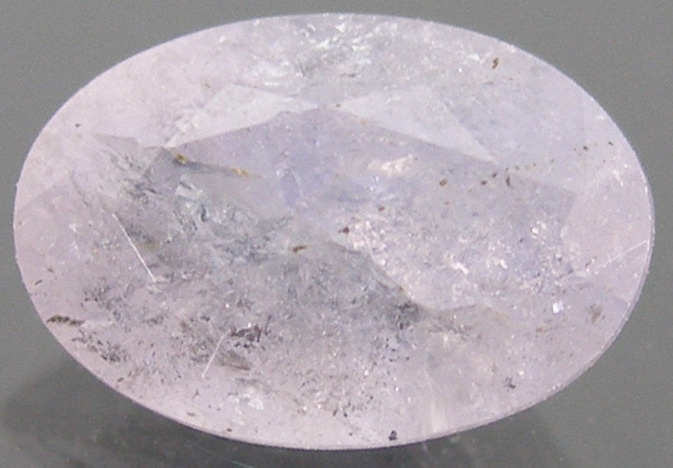Magnesioaxinite

Magnesioaxinite
(From New Tanzania. Weight: 0.61 carat)
Image © supplied by Woodmansee* Gems
The magnesioaxinite in the image above was said by Woodmansee Gems to fluoresce orange under long wave UV, and also to display a slight color change from pale lavender to pale blue. Magnesioaxinite is uncommon as a faceted stone, and very rare in fully transparent quality. Woodmansee made a further interesting remark about this stone; that buyers should be aware that brown axinite with a blue flash or a blue streak is not magnesioaxinite. [1] was cited as a reference.
Magnesioaxinite is a mineral belonging to the axinite group, which is composed of calcium, iron, titanium, and magnesium silicates. Its chemical formula is (Ca,Fe,Mg,Mn)(Ti,Fe,Al)2Si4O12(OH,F) and it is typically found in contact metamorphic rocks and hydrothermal veins. It is a rare mineral that is typically found in small to medium-sized crystals.
Magnesioaxinite has a vitreous luster and can be found in colors ranging from light to dark brown, gray, green, and black. It is typically found as prismatic crystals that are elongated along the c-axis, and it often has a complex twinning pattern. It has a Mohs hardness of 6-7, which makes it relatively hard, and it has a specific gravity of 3.2-3.4.
Magnesioaxinite is a unique mineral in that it contains both magnesium and titanium in its chemical composition. This makes it an important mineral for geologists, as it can provide insight into the processes that formed the metamorphic rocks in which it is found. It can also provide information about the chemical conditions that existed when the mineral was forming, such as the temperature and pressure.
Magnesioaxinite is not a mineral that is commonly used for industrial or commercial purposes, but it is of interest to collectors due to its rarity and unique crystal structure. It is typically found in limited quantities and is not found in large deposits, making it a rare and valuable specimen.
Magnesioaxinite is a rare mineral that is typically found in small to medium-sized crystals. Its unique chemical composition, which contains both magnesium and titanium, makes it an interesting mineral for geologists. Its rarity and unique crystal structure also makes it a valuable specimen for collectors. Due to its limited availability, magnesioaxinite is not commonly used for industrial or commercial purposes.
Back to the Gemstones List home page - over 160 gemstones explored!
Sources Referenced:
[1] Gems & Gemology, Winter 2007 issue (Vol. 43 No. 4), page 374.
Please feel free to link to this page - copy / paste the text below: (click to select)
Privacy Policy | Cookie Policy | GDPR | About This Site / Terms

© gemstoneslist.com 2018


